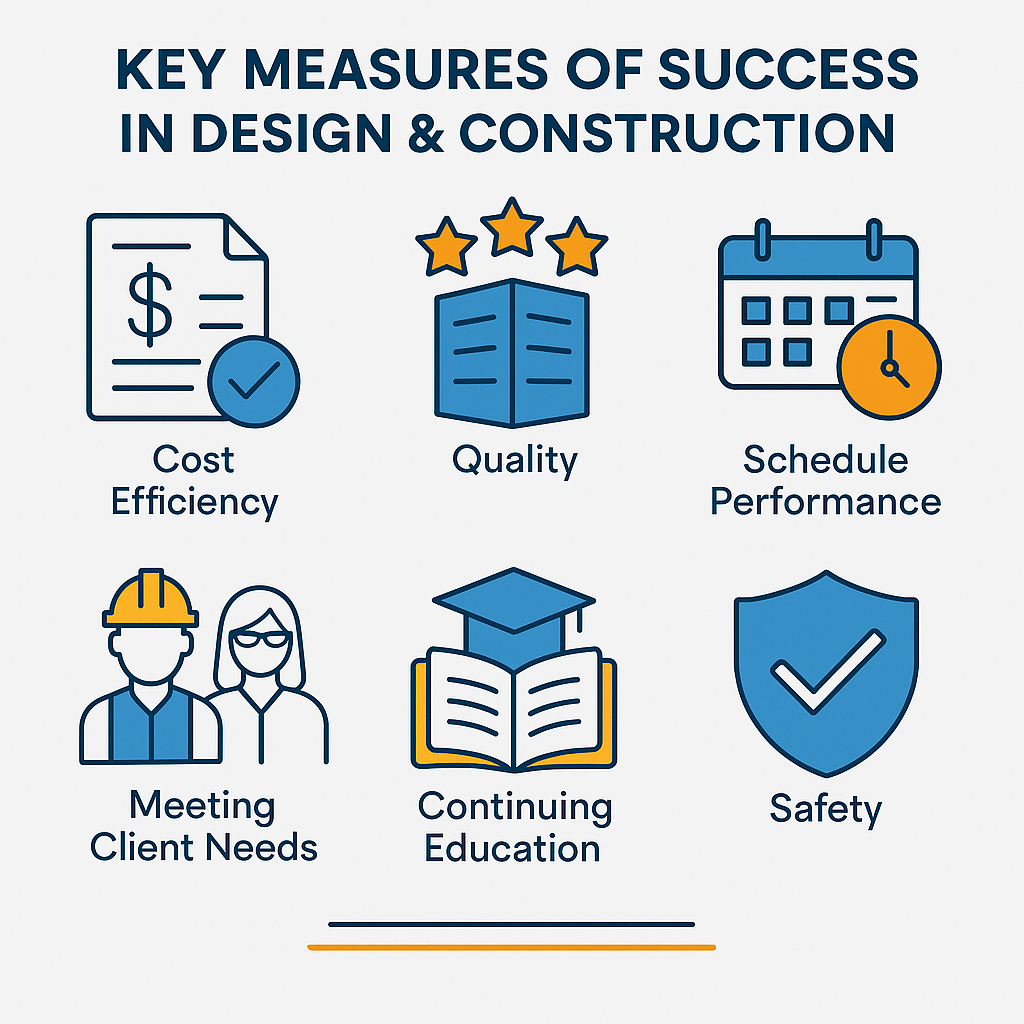- Client Satisfaction & Owner Expectations
- Why it matters: If the owner isn’t happy, the job isn’t done—no matter how solid the work.
- Key Metrics:
- On-time delivery (Schedule Adherence)
- Budget performance (Cost Variance)
- Owner satisfaction surveys / feedback loops
- Punch list completion rate
- Project Profitability
- Why it matters: You can be busy and still be broke. Profit = sustainability.
- Key Metrics:
- Gross profit margin per project
- Change order ratio and approval time
- Overhead recovery
- Field Productivity & Operational Efficiency
- Why it matters: Time is money on every jobsite.
- Key Metrics:
- Labor productivity (output per labor hour)
- Rework rate (a silent budget killer)
- Equipment uptime / usage rates
- Team & Trade Partner Performance
- Why it matters: Subcontractors and internal crews make or break a project.
- Key Metrics:
- Schedule reliability (percent plan complete)
- Safety incidents / near misses
- Communication effectiveness (meetings, RFIs, response time)
- Workforce Development & Retention
- Why it matters: Turnover, burnout, and talent shortages are real threats.
- Key Metrics:
- Training hours per employee
- Staff turnover rate
- Engagement and development benchmarks
- Continuing Education & Learning Culture
- Why it matters: Codes change. Tech evolves. So should your team.
- Yet, continuing education in this industry is often overlooked or under-resourced.
- SLC3 offers: Targeted, industry-aligned programs that fill the education gap for both technical and leadership growth.
- Key Metrics:
- CE hours completed per year
- Certifications earned
- Internal promotions from training impact
- Business Development & Pipeline Health
- Why it matters: Today’s proposal or bid is tomorrow’s backlog.
- Key Metrics:
- Win rate on proposals
- Average project size
- Time from bid to contract
- Advanced notice of project
- Your calls are answered
- Referrals from partners
🔧 Top Tools for Measuring Success in Design & Construction
Project & Financial Management
- Procore, Autodesk Construction Cloud, Viewpoint – All-in-one tools for project tracking, RFIs, and budgets.
- Sage 300 CRE or Deltek Vantagepoint – Construction-specific accounting and project cost tracking.
Client Relationship & Feedback
- SurveyMonkey or custom-built owner feedback forms post-project
- Client portals in CRMs (like HubSpot or Cosential for AEC) to manage communications transparently.
Field Operations & Scheduling
- PlanGrid, Fieldwire, or Raken – For field reports, punch lists, and crew coordination.
- P6 by Oracle – For complex scheduling needs (especially on infrastructure or public-sector jobs).
Education & Development
- SLC3 Continuing Education Programs – Tailored content for designers, construction professionals, project managers, safety, administration professionals, marketing and business development and organization leaders. (Credits offered)
- LinkedIn Learning and RedVector – Online CEUs for broader technical and compliance topics.
- LMS platforms (TalentLMS, Litmos) for internal training rollout.
BI & Dashboards
- Power BI or Tableau – Turn data from Procore/Sage into real-time dashboards.
- Google Looker Studio – Great free option for simple performance visuals.
🧠 The Big Picture: Owners Want Outcomes, Not Excuses
In today’s market, owners expect more than competent delivery. They want:
- Partners who understand their vision.
- Contractors who bring transparency and accountability.
- Project teams that stay ahead of issues, not just react to them.
Strong communication, smart use of data, and a culture of continuous improvement (like what SLC3 promotes) aren’t just “nice to have”—they’re how top firms differentiate and win more work.
Want to position your firm at the top of the food chain? Start with the right success measures—and the right learning culture to back them up.
AUTHOR:
Kelly Jackson, Executive Director SLC3






